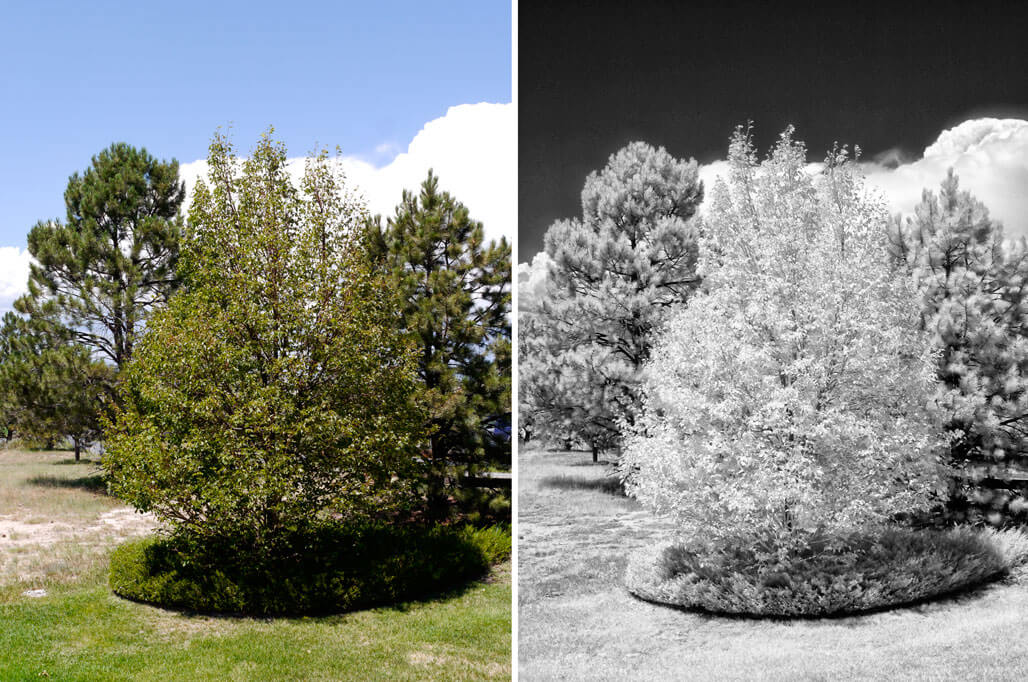When it Comes to Infrared You’ve Got Choices
There are two basic methods for capturing infrared images with mirrorless cameras: The first is by attaching an IR filter, such as the relatively affordable Hoya R72, to your camera’s lens. Other filters, such as Singh Ray’s I-Ray or Cokin’s A007 filter, this latter one may be hard to find. The second option is having the camera converted to IR-only operation by companies, such as LifePixel .

The advantage of using a filter is that it is inexpensive (compared to conversion) but because the filter is so dense, it produces long exposure times. Conversion is more expensive and afterwards you can only use the camera for Infrared-only capture. The upside is that it can then be used like any other camera producing hand holdable shutter speeds—no tripod necessary—which is not tyoiucally the case when using filrees.
For the below shots, I attached a 52mm Hoya R72 filter to a Lumix G Vario 14-45mm f/3.5-5.6 lens mounted on a Panasonic Lumix G5 and immediately saw positive results on the camera’s LCD. The camera responded well in Manual mode and when I shifted into Program mode it again produced acceptable exposures. The G5’s autofocus system also blasted right through the filter and quickly focused on the subject matter.
The image at left is a perfect infrared test subject: A deciduous tree bracketed by two evergreens that don’t reflect as much IR radiation along with blue sky and white clouds. Exposure for the first shot was of 1/400 sec at f/10 and ISO 400. The image at right, with the Hoya R2 filter in place, produced an exposure of 2.5 sec at f/4.8 and ISO 400. If you shoot in Monochrome mode you’ll get a black and white image as shown here. If you shoot in RAW, you’ll need to do some processing as shown here.
This was the case with my Panasonic Lumix G5 (my converted Lumix G6 behaves the same way,) other mirrorless cameras may behave differently so the only way to find out what works for your camera is to try shooting with an infrared filter that you borrow or purchase with the understanding that if it doesn’t work you can return it.
If you can have your mirrorless camera converted for IR capture from LifePixel, you can expedite (7 vs 10 day) the conversion process by using coupon code “farace.”




